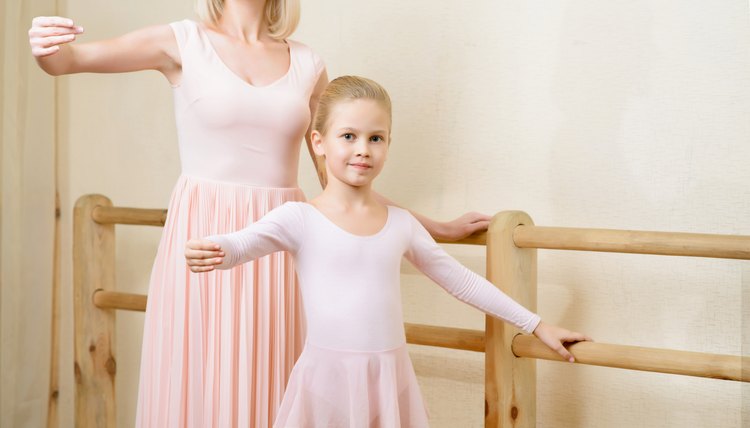Proper Body Alignment for Dancers

Graceful posture is the key to beautiful dance movements. Proper body alignment allows the dancer to move freely and lessens the risk of injury. Poor body alignment puts excess strain on muscles and joints, while proper alignment helps to strengthen the dancer's muscles. Learning proper alignment, or body carriage, is often the first step in learning to dance.
Stand facing forward with your arms hanging loose and naturally at your sides. Your head should sit level on your neck, neither tilted forward or leaning back. Avoid hunching your shoulders. Check your alignment in a full-length mirror.
Soften your knees. Stand with knees over the toes. The kneecap shouldn't extend over the toes. Don't lock the knees, as it puts extra strain on the back of the knees, putting pressure on the base of the spine.
Align your spine so that your back is straight, still with the natural curve at the base of the spine. Your shoulders, hipbones and knees should be in line. According to Andrea Adams, a posture alignment specialist with Moving Synergy in Austin, Texas, stacking these major joints like the rungs of a ladder reduces stress on the joints.
Balance your weight evenly over both feet, flat on the floor. Don't roll your feet inward or outward.
Relax. Tensing your muscles can put strain on muscles and joints and pull the body out of alignment. Regular exercise and relaxation techniques, such as deep breathing, can help you to relax.
Tips
When a dance move calls for turnout, turn at the ball-and-socket hip joint, instead of from your knee or ankle. Turnout allows you to lift your leg higher.
Warnings
Avoid hyper-extension -- with your butt pushed back -- and slouching -- with your pelvis pushed forward.
Writer Bio
Cynthia Myers is the author of numerous novels and her nonfiction work has appeared in publications ranging from "Historic Traveler" to "Texas Highways" to "Medical Practice Management." She has a degree in economics from Sam Houston State University.
